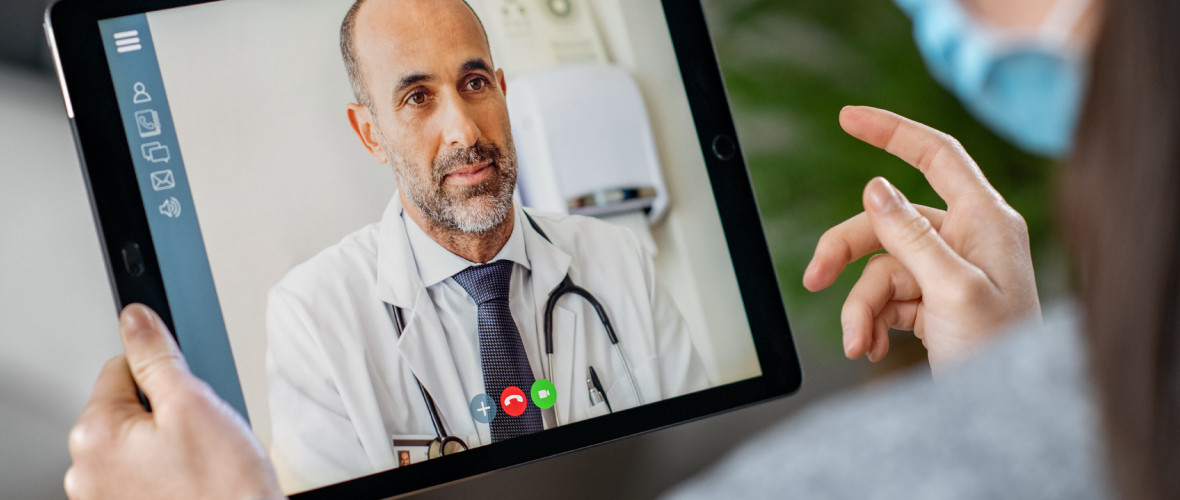Over the last 10 years, preventive medicine has evolved to embody patients’ overall well-being—both physical and mental. Recent studies indicate that early, effective behavioral health treatment and prevention provides beneficial impacts that are more pervasive and far-reaching than previously known. Meanwhile, COVID-19 has had an extraordinary impact on the entire healthcare system, including on preventive medicine and wellness plans. With the pandemic significantly impacting mental health and many patients neglecting care due to the risks of leaving home, providers must respond to evolving trends.
Traditionally, mental health was discounted as a variable to determine physical health factors, but increasing data proving the correlation makes that aspect difficult to ignore any longer. Significant links have been found between declining mental health and physical health. The National Association of Psychiatric Health Systems found that, for example, “those suffering from depression are more likely to suffer from physical illnesses including cancer, stroke, diabetes, and heart disease than are members of the general population. Those who have bipolar disorder have a 35% higher mortality rate from natural causes than those of the same age and gender in the general population.” Similarly, Navigant Healthcare found that between 15% to 30% of people with diabetes also suffer from depression, resulting in worse outcomes, such as higher body-mass index and increased risk of other conditions.
The Pandemic’s Impact On Patients’ Mental and Physical Wellbeing
The pandemic’s added financial, emotional, and physical toll on people’s neglected wellness plans has had devastating physical and mental consequences. Adults have reported a significant decline in mental and physical wellbeing, worsening of chronic conditions, and increased alcohol consumption or substance use. The CDC reported a decline in routine pediatric vaccines, and other research indicates a delay in breast cancer screenings, ultrasounds, and MRIs.
The COVID-19 pandemic has posed challenges for all communities, but has disproportionately affected vulnerable populations, including children, seniors, and people of color. Research indicates that social isolation, uncertainty, and parental angst are also beginning to negatively impact children and adolescents’ mental health. According to Johns Hopkins Medicine, minority communities “share common social and economic factors that increase their risk for COVID-19,” and these communities are facing higher rates of untreated chronic conditions and death as a result of both COVID-19 and other untreated health issues. Similarly, the elderly or those in remote communities are also at greater health risk, and the decline in access combined with mounting disparities must be identified and resolved.
Getting Back to the Business Of Preventive Care
With healthcare risks compiling, preventive care must resume. But the question remains: how should patients return to pre-pandemic treatment routines? The answer may be that there is no going back to the way things were. Instead, there could be a new normal for the healthcare community, complete with a new set of challenges. However, with these challenges come new opportunities for providers to help patients get the preventive care they need with more safety, efficiency, and accessibility than ever before.
To mitigate risk and encourage patient preventive care, integrate these three new tools into your practice.
- Telehealth & telemedicine adoption is an opportunity for both physicians and patients. This digital era has facilitated the adoption of telemedicine tools during the pandemic with sweeping relaxations of regulations. For both primary care providers and independent specialists, telehealth allows for expanded reach and monitoring for some of the most vulnerable populations. This includes seniors, rural populations, or the economically disadvantaged. Telehealth provides significant advantages for those who may struggle with access to transportation, getting time off of work, child care, or fear of medical facilities.
- Communication about safety protocols is key to ensuring your medical facility is a safe space for patients, and fosters patient trust. By clearly and effectively laying out your procedures, patients will be more confident and providers can improve patient safety, reducing margins of medical errors and patient harm. Details such as hand sanitizer at entrance points or “from car” check-ins are some steps which increase credibility and safety.
- Automation is key to increasing capacity without increasing administrative burden and costs. By automating appointment reminders, your facility can improve workflows and increase patient efficiency while also reducing patient no-shows. Ultimately, this will result in higher patient satisfaction and improved practice revenue.
The healthcare environment is changing quickly, and regulations are speeding up to meet those needs. Telehealth regulations are pivoting to meet the pandemic, the CDC is providing regular updates with each shift in regulations and protocol, and the Affordable Care Act is covering preventive services.
While this new set of changes can be difficult to navigate for providers, these tools offer a solution to the mounting challenges. By integrating new practices, protocols, and technologies into your existing workflows, providers can increase access and efficiency while improving the practice and overall patient care. RXNT’s telehealth-friendly Electronic Health Records, Medical Billing, and Scheduling software will help integrate virtual care into your day-to-day.




